Genome-Based Taxonomic Classification of the Phylum Actinobacteria
- PMID: 30186281
- PMCID: PMC6113628
- DOI: 10.3389/fmicb.2018.02007
Genome-Based Taxonomic Classification of the Phylum Actinobacteria
Abstract
The application of phylogenetic taxonomic procedures led to improvements in the classification of bacteria assigned to the phylum Actinobacteria but even so there remains a need to further clarify relationships within a taxon that encompasses organisms of agricultural, biotechnological, clinical, and ecological importance. Classification of the morphologically diverse bacteria belonging to this large phylum based on a limited number of features has proved to be difficult, not least when taxonomic decisions rested heavily on interpretation of poorly resolved 16S rRNA gene trees. Here, draft genome sequences of a large collection of actinobacterial type strains were used to infer phylogenetic trees from genome-scale data using principles drawn from phylogenetic systematics. The majority of taxa were found to be monophyletic but several orders, families, and genera, as well as many species and a few subspecies were shown to be in need of revision leading to proposals for the recognition of 2 orders, 10 families, and 17 genera, as well as the transfer of over 100 species to other genera. In addition, emended descriptions are given for many species mainly involving the addition of data on genome size and DNA G+C content, the former can be considered to be a valuable taxonomic marker in actinobacterial systematics. Many of the incongruities detected when the results of the present study were compared with existing classifications had been recognized from 16S rRNA gene trees though whole-genome phylogenies proved to be much better resolved. The few significant incongruities found between 16S/23S rRNA and whole genome trees underline the pitfalls inherent in phylogenies based upon single gene sequences. Similarly good congruence was found between the discontinuous distribution of phenotypic properties and taxa delineated in the phylogenetic trees though diverse non-monophyletic taxa appeared to be based on the use of plesiomorphic character states as diagnostic features.
Keywords: G+C content; Genome BLAST Distance Phylogeny; chemotaxonomy; genome size; morphology; phylogenetic systematics; phylogenomics.
Figures
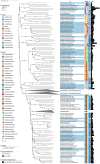
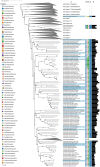
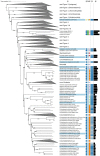
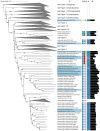
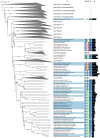
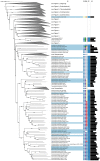
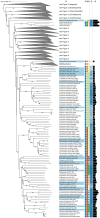
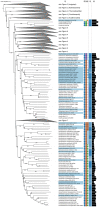


Comment in
-
Commentary: Genome-Based Taxonomic Classification of the Phylum Actinobacteria.Front Microbiol. 2019 Feb 22;10:206. doi: 10.3389/fmicb.2019.00206. eCollection 2019. Front Microbiol. 2019. PMID: 30853945 Free PMC article. No abstract available.
References
-
- Abe S., Takayama K.-I., Kinoshita S. (1967). Taxonomical studies on glutamic acid-producing bacteria. J. Gen. Appl. Microbiol. 13, 279–301.
-
- Adékambi T., Stein A., Carvajal J., Raoult D., Drancourt M. (2006). Description of Mycobacterium conceptionense sp. nov., a Mycobacterium fortuitum group organism isolated from a posttraumatic osteitis inflammation. J. Clin. Microbiol. 44, 1268–1273. 10.1128/JCM.44.4.1268-1273.2006 - DOI - PMC - PubMed
LinkOut - more resources
Full Text Sources
Other Literature Sources
Molecular Biology Databases
Research Materials

